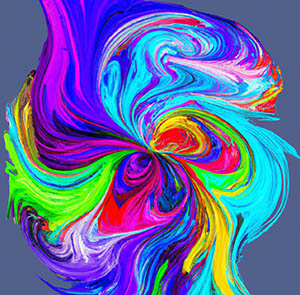Spatial-sequence synesthesia
Spatial-sequence synesthesia is a rare neurological condition in which individuals perceive numerical sequences as points in space. This condition is considered a type of synesthesia. Spatial-sequence synesthesia is estimated to affect about 4% of the general population and is believed to be more common in women than in men.

Symptoms of Spatial-Sequence Synesthesia
Individuals with spatial-sequence synesthesia often experience numbers as having specific spatial locations. For example, they may see numbers arranged in a specific sequence in their mind's eye, such as in a line or in a specific pattern. Some people with spatial-sequence synesthesia may also experience colors or textures associated with numbers.
Interestingly, individuals with spatial-sequence synesthesia often report having a clear visual memory for numerical sequences, and they may be able to recall numerical information more easily than those without the condition. Spatial-sequence synesthesia can also be associated with other types of synesthesia, such as grapheme-color synesthesia or sound-color synesthesia.
Causes of Spatial-Sequence Synesthesia
The exact causes of spatial-sequence synesthesia are not yet fully understood. However, some researchers believe that the condition may be related to cross-activation in the brain between the areas responsible for numerical processing and those involved in spatial perception. Other studies suggest that spatial-sequence synesthesia may be related to differences in the structure or function of the brain's parietal cortex, a region that plays a crucial role in spatial perception.
It is worth noting that spatial-sequence synesthesia is a lifelong condition and is not considered a disorder. Individuals with spatial-sequence synesthesia are generally able to function normally in daily life, and many may even view their condition as a gift rather than a burden.
Implications of Spatial-Sequence Synesthesia
While spatial-sequence synesthesia is not considered a disorder, it may have implications for how individuals with the condition perceive and process numerical information. For example, some researchers have suggested that spatial-sequence synesthesia may be associated with superior numerical memory, as individuals with the condition often report having a clear visual memory for numerical sequences.
Additionally, some studies have suggested that individuals with spatial-sequence synesthesia may be more sensitive to numerical information, such as subtle differences in numerical values or numerical patterns. This heightened sensitivity to numerical information may have implications for fields such as mathematics or finance, where numerical accuracy is crucial.
In conclusion, spatial-sequence synesthesia is a rare but fascinating condition that highlights the complex relationship between perception, cognition, and the brain. While the exact causes of the condition are not yet fully understood, research suggests that it may be related to cross-activation in the brain between regions involved in numerical processing and spatial perception.
Despite being a relatively rare condition, spatial-sequence synesthesia has important implications for how individuals with the condition perceive and process numerical information. For example, individuals with the condition may have superior numerical memory and be more sensitive to numerical information than those without the condition.
Overall, spatial-sequence synesthesia serves as a reminder of the incredible diversity of human experience and perception, and highlights the fascinating ways in which the brain is capable of processing and interpreting information.